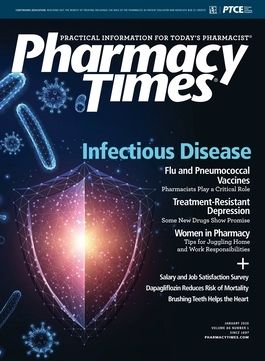Publication
Article
Pharmacy Times
New Website Tackles Health Care Diversion
Author(s):
HealthCareDiversion.org provides a platform to gather incidents into a national database and improve reporting
A new website addresses drug diversion in health care facilities and the lack of reporting of these offenses.
“HealthCareDiversion.org provides a platform to compile all known health care diversion incidents into a single, national database, allowing stakeholders to identify trends and develop methods to prevent future diversion, according to the website.
Diversion Analytics Network, a not-for-profit company formed in 2019, operates the website. Both health care professionals and the general public can search the site, which aims to raise awareness of health care diversion and help protect the public from injury related to health care diversion. To protect individuals’ and institutions’ privacy, HealthCareDiversion.org screens and de-identifies diversion incidents as necessary, the website states.
Tom Knight, chief executive officer of Invistics Corp and principal investigator at the National Institutes of Health, and Lauren Lollini, secretary of the International Health Facility Diversion Association (IHFDA) and a patient safety advocate, founded HealthCareDiversion.org. The website is supported by the IHFDAwhich presented the website at its 2019 annual conference in Orlando, Florida.
The founders created a national database because, although advances have been made, most of the diversion inside health care facilities is not reported properly to the Drug Enforcement Administration, law enforcement, and state regulatory boards. HealthCareDiversion.org seeks to educate both the general public and the health care community about the issue of health care drug diversion.
When I was with the Cincinnati, Ohio, police department and we addressed these offenses almost daily, we averaged 50 health care facility employee arrests each year. Looking at the population of Cincinnati at the time and the national population, we estimate that more than 100 arrests a day should have occurred if agencies were seriously looking at
the diversion issue.
HealthCareDiversion.org aims to obtain the most accurate database of drug diversion incidents in the United States and relies in part on the reporting of those who work inside health care facilities. Great care is taken to verify the reports and not duplicate them. One resource is the list server of IHFDA, which routinely reports known drug diversion events inside hospitals and long-term care facilities.
The website also contains facts on health care facility incidents that have been reported across the country, including a US map that pinpoints reported diversion issues. Anyone can submit anonymously, and HealthCareDiversion.org will accept all types of incidents, including criminal cases, licensure cases, and suspected diversion. The website requests as much detail as possible to verify the incident and avoid duplication.
HealthCareDiversion.org expects its work to produce benefits such as help for addicted staff members; improved best practices for drug diversion investigations; reduced financial and health risk to hospitals, patients, and staff members; patient empowerment; and smarter hiring decisions.
All these relate to awareness of not only the health facility but also the general public, which likely has little or no knowledge about the scope of this problem and its collateral damage. When drug diversion inside health care facilities is not reported, it hurts the innocent patients that the addict will encounter at the next facility, and it makes successful rehabilitation of health care employees more difficult.
Institutions that report these issues should be applauded and recognized for not only doing the right thing but also attempting to safeguard patients and, hopefully, getting employees into long-term rehabilitation.
REFERENCE
Together we can stop drug diversion. HealthCareDiversion.org website.healthcarediversion.org/. Accessed December 15, 2019.







